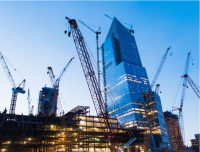
Higher interest rates have reshaped investment paradigms across private markets, including infrastructure. Jerome Neyroud, Head of Infrastructure Debt at Schroders Capital, discusses the state of the market today and looks at trends that will drive activity in the years ahead
How has dealflow and the M&A market changed?
There has been a reduction in M&A activity, which has had a direct impact on the infrastructure equity side of the business. Infrastructure debt dealflow, however, is less reliant on the M&A engine. Dealflow in infrastructure debt remains strong with no slowdown in overall activity.
Although we have seen a decline in M&A related financing, re-financing and capex financing have taken up the mantle, with equity investors focusing more on asset management or growth and less on asset sales.
We are seeing less deal volume in the digital sector after a few years of very strong activity where high demand was underpinned by the post-covid dynamic. For example, fibre for remote working and data centres for streaming. But this reduction is more than compensated for by the increase in energy transition financing. There is generally little activity in social infrastructure, in part due to reduced state budgets.
Within the traditional infrastructure segments such as transportation, certain subsectors that suffered from the effects of the pandemic have generally recovered to pre-covid levels. The space is evolving rapidly with more emphasis on green transportation like rail and emerging trends like EV charging infrastructure.
How will higher rates impact returns, and how resilient to risk is infrastructure debt as an asset class?
Infrastructure is one of the most capital- intensive asset classes and therefore requires, everything being equal, more debt than traditional corporates. It is therefore not unexposed to changes in interest rates. This is why, rather than lending on an unhedged floating rate basis as opposed to traditional bank lending, infrastructure lenders are adamant on mitigating interest rate risk from day one at the borrower level. This is affected either via fixed-rate financing or interest rate swaps.
Therefore, interest cover ratios have been relatively immune to interest rate risk. This is a distinguishing feature of infrastructure debt relative to corporate direct lending and is another illustration of the asset class’s stability.
Infrastructure assets generally continue to produce stable, positively linked to inflation and predictable operating cashflows. Debt is heavily structured and covenanted, which allows risk to further be mitigated and therefore investors view this area of private debt as a beacon of stability.
There are, however, a few acid tests that one needs to consider. As an illustration, we tend to shy away from construction risk and focus on mature brownfield assets. Construction risk has increased recently due to supply chain bottle necks.
Another topical issue is the risk of stranded assets, for example financing assets that are relevant today but may become irrelevant tomorrow. Probably nobody would consider refinancing a coal-fired power plant today. What would be the economic utility of a gasfired power plant or a gas pipeline in 20 years in a net-zero economy? We are taking a very long-term view when analysing these risks. We also include protective structuring features like amortization or cash sweeps where necessary to mitigate or remove refinancing risk.
Therefore, one of the key risks is related to financing the assets of today that will no longer be the essential assets of tomorrow.
How is the asset class addressing the subject of ESG today?
On the face of it, everyone wants to finance the energy transition. But rewiring the entire world’s energy supply is fraught with complexity. For infrastructure debt investors, ESG factors add a new dimension of risk that needs to be taken into account.
Take renewables as an example. Wind turbines and solar panels are relatively safe investments, so everyone wants to invest in them, given that the gap between supply and demand still exists. If one wants higher returns on the energy transition theme, they will need to take more risk, which requires considering additional sectors such as hydrogen or EV charging.
While these sectors are clearly promising, they are in nascent stages of development and therefore have less history from a track record perspective. This is why we remain selective. We note, however, that infrastructure equity funds, which have a higher risk appetite than debt, are embracing these sectors.
Further reading : What the future holds for infrastructure debt







